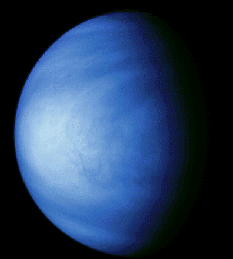 Until the 1960s,
Venus was often considered a "twin sister" to the Earth
because Venus is the nearest planet to us, and because superficially the two
planets seem to share many characteristics
(image source).
Until the 1960s,
Venus was often considered a "twin sister" to the Earth
because Venus is the nearest planet to us, and because superficially the two
planets seem to share many characteristics
(image source).
 Until the 1960s,
Venus was often considered a "twin sister" to the Earth
because Venus is the nearest planet to us, and because superficially the two
planets seem to share many characteristics
(image source).
Until the 1960s,
Venus was often considered a "twin sister" to the Earth
because Venus is the nearest planet to us, and because superficially the two
planets seem to share many characteristics
(image source).
I can tell from here . . . what the inhabitants of Venus are like; they resemble the Moors of Granada; a small people, burned by the sun, full of wit and fire, always in love, writing verse, fond of music, arranging festivals, dances, and tournaments every day. (Quoted in National Geographic, June, 1975)Now apart from the fact that this description is rather unremarkable because it sounds like everyday student life around a great University like ours, it turns out that monsieur de Fontenelle was quite incorrect about Venus and its conjectured inhabitants.